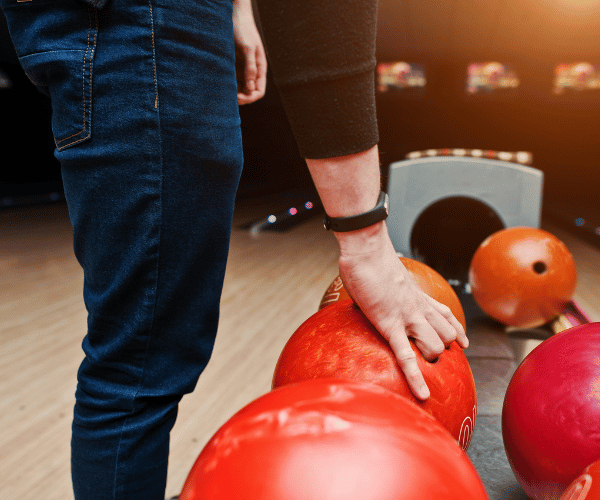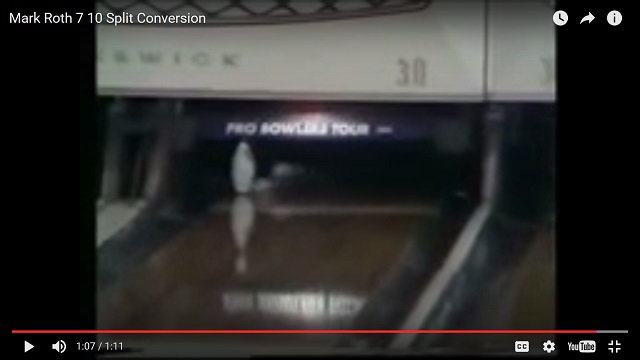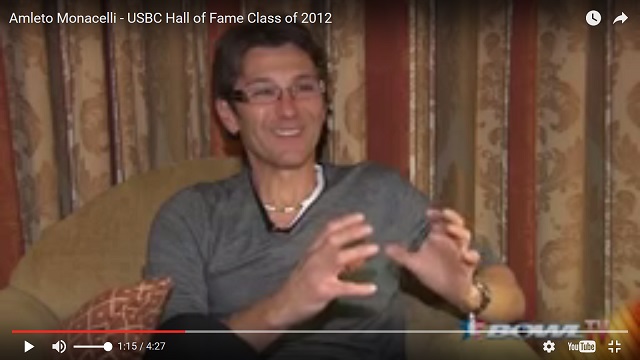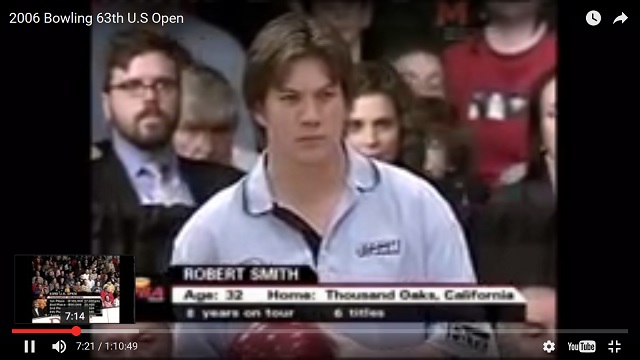Stroker tweener and cranker style bowlers are three different types of bowling. No two bowlers are alike,and for that reason everybody has a unique style. Whether it be either stroker, tweener, or a cranker style bowler.
The biggest differences are how many revolutions(revs) they use, how fast or slow the ball travels, and the amount of hook that is used to get to the pocket. To try to describe how someone bowls, we refer to them as stroker, tweener and cranker style bowlers.
Strokers Tweener And Cranker Style Bowlers Lane Play
Three basic areas to play the lanes(for right handed bowlers,) left handed bowlers would be the reverse.
- Stand far left, play across the lane and hook the ball back to the pins-A big hook cranker style.
- Bowl on the right side and follow a straighter line, using finesse and accuracy- stroker style
- Stand in the center of the alley and throw a shot somewhere in between- tweener style
Crankers have a lot of revs on their ball. The (right handed) crankers will play starting from the far left of the lane and hook the ball back hard to the pocket. They are the highest power generating bowlers, high revs, high speed and the pins explode off the deck. They actually maximize the striking potential with plenty of power, and the greatest entry angle.
The Good And Bad Results With Crankers
All this speed and power also carries a much higher risk of splits. Sometimes they are nasty wide and hard to convert splits.However, when things are working well, they can string strikes and run up some high scores. It is a beautiful thing to watch any bowler deliver his style of shot and get strikes over and over again.
They do this in a variety of ways. Sometimes, from cupped wrist to an almost distorted twist of the wrist to maximize the revs they impart on the ball. Most of the power bowlers have a high back swing and open their shoulder to generate the high ball speed.
Some are referred to as plant and pull bowlers, where they develop the revs from pulling up on the ball as they plant their slide foot. No matter how they do it, the important thing to the cranker is to get a lot of revs. They generate a nice entry angle along with the power to crush those pins. In doing so they actually make the strike zone a bit wider, but with the high risk of splits when they miss.
Let’s Start With The Cranker Style Bowlers
Cranker Style Bowlers
- Use cupped wrists, have a high rev rate 350 and higher.
- generate a lot of speed and have medium to very high arm swing.
- powerful strikes that blow the pins off the deck
- stand far left(right handed bowlers) and throw toward opposite gutter
- Use the whole lane, play “gutter to gutter”
In the good old days bowlers that cupped their wrists, and had lower arm swings, were considered crankers. Some famous low arm swing bowlers included; Jim Godman, Bob Learn, Jr., Ryan Shafer, Kelly Coffman, and Bob Vespi.
Mark Roth’s 7-10 Split Conversion
One of the early crankers using the high arm swing with a cupped wrist was Mark Roth. His cupped wrist and high arm swing enabled him to get extra turn on the ball and generate speed and power.
He also was the first bowler on a televised match to convert the 7-10 split.
He was soon followed by others using the same style, Amleto Monacelli, Jason Couch, Robert Smith, Mike Fagan and Tommy Jones. Amleto Monacelli was the first international bowler to make the hall of fame.
Amleto Monacelli -Hall of Fame Class 2012
2006 PBA Open
Here is the 2006 PBA Open with Bob Smith, Mike Fagan, Tommy Jones and Ryan Shafer
Strokers have to rely on more consistency less revs and don’t rely on all that power to blast the pins off the deck. Right handed strokers tend to play the right side of the lane. They start from the middle to slightly right of the middle of the lane.This is the most classic form of bowling.
Strokers release the ball smoothly and have less turn on the ball usually around 300 revs.They square their shoulders to the alley and have a back swing that is moderate but not huge.They don’t rely on a big hook, or speed and power, but more on finesse and accuracy. Precise ball placement is the main factor for the stroker getting his strikes.
Stroker Style Bowlers
- Medium arm swing, little or no cupping of their wrist.
- Smooth accurate almost effortless delivery, playing with finesse.
- low to medium ball revs
- squared shoulders at the foul line
Famous strokers include Walter Ray Williams Jr., Norm Duke, David Ozio and Dick Weber. All of them are PBA Hall of Fame Bowlers.
Norm Duke’s 300 Game
Norm Duke throws a 300 against Walter Ray Williams, Jr in the PBA Earl Anthony Classic in 2003. It is the 1st televised 300 for Duke.
Tweeners are somewhere between a cranker and a stroker and vary in different ways. Some have the power from a high back swing, but maybe less revs. Others have the lower back swing, and more revs.Tweeners tend to be more versatile and can adjust wrist position or speed for varying lane conditions, but are not always consistent or capable of making the right adjustment soon enough.
Tweener Style Bowlers
- Have characteristics of both crankers and strokers.
- The may have higher arm swings than strokers, but lower than crankers.
- They may use a lower swing but cup their wrist some for extra revs.
- Tweeners are sometimes bowlers that show some but not all traits of either style.
Today, the labels of Cranker, Stroker and Tweener are harder to apply. Robert Smith and Tommy Jones are definitely Crankers.
The lower arm swing of Michal Fagan, and less muscle would seem to place him in a tweener category.He has more revs that Tommy Jones, but does not lift hard at the bottom of the swing like Jones does.
Walter Ray Williams Jr seems to lift hard at the bottom of his swing, but is considered a stroker. I personally think it is the lane conditions that dictate how a bowler is going to play that day. More speed or less speed, cocked wrist or un-cocked wrist, high or less arm swing, all depends upon the bowler and how he makes his adjustment.
A variation on the tweener is the power stroker. A combination of a smooth delivery stroker and the power, speed and hook of a cranker. Defined by a high back swing, open shoulders creating aggressive hook, and the ability to maintain good focus through out the delivery.The key to the power stroker is to deliver the same shot over and over, with accuracy and consistency.
Power Strokers Style
- They tend to generate high revs on the ball-rev rate about 300-370
- Includes a high back swing to produce speed
- An open shoulder enabling a more aggressive hook
- A smooth delivery with accuracy is critical shot after shot.
One of the most famous power strokers is Pete David Weber. He goes by the nickname PDW, and is known for being brash, outspoken and animated behavior like”the crotch chop” that some consider unsportsmanlike .
He was known for his high back swing and the excessive side rotation he puts on the ball. His “Yes! God damn it! Yes! antics after his 2012 event where he beat Mike Fagan by one pin, made ESPN’s top 10 on Sportsnation 101 celebration fails.
Pete Weber was outrageous at times, but he had the smooth accurate delivery of a stroker, to go with his aggressive hook and powerful delivery of a cranker to earn his power stroker label. He was also one of a few other bowlers to use a spinner technique on his ball at times.
In 1995 Pete had his worst year ever, he worked with his brother Rich for four months and learned to spin the ball forward, end over end, to control his hook. It paid off, in 1997 he passed the 2 million dollar mark.
Become as Versatile as Possible
Spinners are another variation of throwing the hook ball. The idea is to get some spin on the ball to allow it to travel in a milder arc or straighter path to the pocket. This also allows for better pin action if the shot is not perfect. Along with Pete Weber, Tom Baker and Ryan Shafer use this technique.
Becoming versatile is the key to better bowling. making the adjustment, the proper adjustment is vital to consistent success.Even the pros have to keep evolving as the game changes around them.
If you look at the pros the crankers don’t dominate like you would think. It is the straighter ball bowlers, the strokers and power strokers that end up winning more consistently. The pros will tell you, straighter is better.
Between Stroker Tweener and Cranker Style Bowlers, Which One Is Best?
So, of all three, stroker, tweener, and cranker bowling styles, which is the best? The pros say straighter is better! I am sure that is to be taken as within reason, and still hooking the ball to a 4 to 6 degree angle to the pocket. It is meant to infer the big hook loses it advantage at times.
I would have to say my personal favorite is the power strokers. I think it comes down to what style you like the best. It is what you can score the best with and remain the most consistent and accurate with. Use a style that is the kindest to your body.
Most pros would agree that a very pronounced cupping of the wrist is hard to maintain with all the games the pros play each week. Nonetheless, it may work well in league play where you only bowl a few games a day.
The pros could easily bowl with practice included, 100 games per week. So, if you have the pro tour in mind, maybe you might want to consider a style that you will have longevity with.
Chas
Let me know what you think. leave your comments below and I will Get back to you ASAP
Check out more products Here
Thanks for your support!





Hi, iam left handed ,atry to roll up the boards around the 5 board ,is a layout for rolling up the gutter,I use 16 lb jackpot solid ,an IAM 73 yrs young .
Hi Allen,
Congrats to you for still using a 16lb ball at your age! I don’t know quite what you mean by a layout for rolling up the gutter. Personally, I can’t play around the five board. I get the ball to wide and drop it into the ditch. I play the 10 board, pretty straight. I throw the 11 board dot, roll over the second arrow and try to keep it lined up with the target board down by the heads. I only move a board with my feet to change up my shot a bit. Sometimes I look past the dot, and maybe at the arrows to give me some length on dry lanes. And I also use a 14lb ball now. it is much easier on my back and hip.
Chas
Very informative, now I have more ideas on how to play with the lane conditions, especially during our local tourneys.. thank you very much!!!
Hi Paulo,
Thank you! I am glad it helped you. Maybe something your learned will help you cash at those tournaments! Good Luck and thanks for taking the time to comment!
Chas
I am a lefty that kind of sits between Cranker and Tweener, depending on my equipment, I found your article quite useful. I have pearlized equipment I like to rev up hard, and solids that I like to lay back on, there is something to be said about changing your style based on your equipment, instead of just staying as a Stroker, Tweener and changing equipment around the oil pattern and lane conditioning ETC. .. what do you think?
Hi Cody,
Thanks, I am glad the article helped you. I can’t see why you couldn’t change up your style somewhat for different balls. I have balls I like to swing a bit, and others i like to play straight down and in. So, I change my stance to open my shoulder more when I swing the ball.And when I play down and in, I may try to stay behind the ball more and square up to the alley. So, I may be in the camp as a tweener/stroker. I am definitely not a big cranker, but not always a stroker or tweener either. Good Point! Thanks for stopping by and leaving such a good comment.
Chas